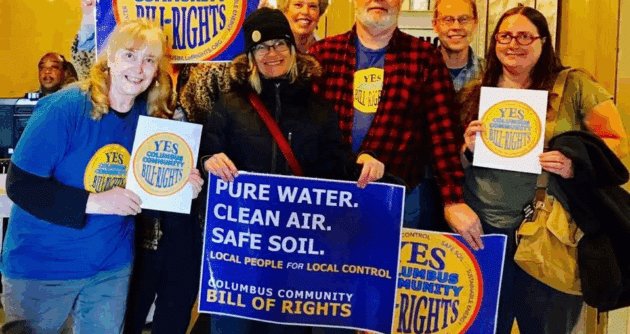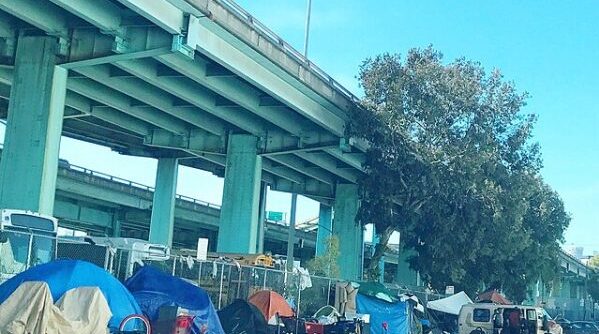“…the people pressed on anyway, regardless of what the Court said…”
Young activists and organizers today study the civil rights movement. It’s our model for organizing. It’s our reference point for how to do it right. It defines the unofficial rules for mass organizing.
In the United States, we are raised to celebrate the social movement for civil rights in the American South in the 1950’s and 1960’s, and use this movement as the model of successful and proper social change organizing. Nearly 100 years after the official end of slavery in the 1860s, black people in the South rose up in nonviolent resistance to white supremacy and successfully changed national policy with, notably, the 1964 Civil Rights Act and 1965 Voting Rights Act. This movement moved into the national conversation with beautifully-stated concepts like King’s reference to “unjust laws” in Letter from a Birmingham Jail. It was a moral and ethical movement.
It was also a movement that could justify its cause by pointing to the opinions of the United States Supreme Court. That is because of who was on the Court at that time. By the end of Truman’s presidency in 1953, every United States Supreme Court Justice had been nominated by Franklin Delano Roosevelt or Harry S. Truman. They were all considered to support the policies of the New Deal. In his first year of office, Dwight D. Eisenhower successfully nominated Earl Warren as the new Chief Justice of the United States Supreme Court. Warren turned out not to be the kind of Justice Eisenhower was looking for. Warren led this New Deal Supreme Court through the 1950’s and 1960’s with decisions like Brown v. Board of Education. The civil rights movement could point to that decision as a source of authority for its direct action and civil disobedience against segregation and other forms of white supremacy. In the end, the Court had the civil rights movement’s back.
The Supreme Court Seeking Justice is an Anomaly
Since then, the United States Supreme Court has turned more and more against justice-seeking social movements and democracy. Nevertheless, the narrative that American society tells about the Court hasn’t really changed. We still tell legends about Brown overturning Plessy. We don’t tell stories about Bush v. Gore and the raw partisanship of the Justices. Nor do we recognize Citizens United as the legacy of 200 years of the Court prioritizing “rights” for corporations.1 Instead, we want to pretend that Citizen United was some kind of anomaly that just needs to be debugged from an otherwise functional system. The problem is that the Court of the 1950’s and 1960’s was the real anomaly in American jurisprudential history. Yet we’ve somehow convinced ourselves that it was normal.
Justice Kavanaugh’s confirmation confirms the Court’s trajectory, since the 1960’s, away from defending human rights and democracy. No longer can impact litigation attorneys write their cases for Justice Kennedy’s swing vote. It’s a solid five-Justice conservative block now, and they are ready to undo the Warren Court decisions from half a century ago that we mythologize as the high point of the United States Supreme Court’s defense of civil rights and liberties.
The Challenge We Now Face: Social Movements in America
So here is the challenge we now face. We are taught to model our social movement organizing after the civil rights movement. But that movement had the United States Supreme Court on its side. Today, we desperately need social movements that successfully fight for freedom, democracy, and justice. But unlike the civil rights movement, we’re going to be fighting the United States Supreme Court every step of the way. This means, in the end, we will not be able to point to the Court to legitimize our actions. Instead, the Court will make our actions illegal. That makes our moment fundamentally different from the civil rights movement. It means we need to look beyond the civil rights movement for organizing models.
The Populist and Labor Movements as a Model
Notably, we need to look back to the historical period that led up to the New Deal. In the late nineteenth century, the populist movement of rural farmers threatened the new corporate robber barons who were concentrating wealth and creating economic injustice. See Lawrence Goodwyn, The Populist Moment: A Short History of the Agrarian Revolt in America. The late nineteenth-century agrarian populists organized a mass social movement against the corporate interests of the Court and other branches of government. We should study their strategies and tactics for tools for resisting today.
Similarly, the early twentieth-century labor movement fought a Court that had fabricated a constitutional right that made most labor laws illegal. During the late nineteenth and early twentieth centuries, in response to the social and economic harms of industrialization, state and local governments enacted many laws to protect people from corporate exploitation. In response, in 1905, the United States Supreme Court claimed that people had a constitutional right to choose how to contract with others (a “liberty of contract”), and thus the Court held unconstitutional a New York state law that prohibited employing a person in a bakery for more than sixty hours a week. This decision is Lochner v. New York:
The statute necessarily interferes with the right of contract between the employer and employees, concerning the number of hours in which the latter may labor in the bakery of the employer. The general right to make a contract in relation to his business is part of the liberty of the individual protected by the Fourteenth Amendment of the Federal Constitution. Under that provision no State can deprive any person of life, liberty or property without due process of law. The right to purchase or to sell labor is part of the liberty protected by this amendment, unless there are circumstances which exclude the right.
Lochner v. New York is the namesake for what is today known as the “Lochner Era,” the several decades at the beginning of the Twentieth Century when the United States Supreme Court used the “liberty of contract” theory to strike down state and local labor laws: health, safety, and welfare laws enacted by legislatures. By constitutionalizing “liberty of contract,” the Court took away the legislative branch’s ability to protect the people.
“No” Is Not an Answer
The early twentieth-century social movements seeking economic justice didn’t take “no” for an answer, even though the United States Supreme Court had definitively spoken on the issue and showed no signs of reversing course. Instead of backing down, the social movement organizers attempted to change the structure of government to enable direct local democracy (through Home Rule and the powers of Initiative, Referendum, and Recall), and they continued to enact economic justice laws at the local and state level. These laws were ostensibly illegal because the Court had said that such laws violated the United States Constitution’s contractual liberty protection between employers and employees. But the people pressed on anyway, regardless of what the Court said, creating the laws they needed to protect themselves from the corporate state. For three decades the Court continued to strike down these laws.
Building Political Power
Finally, only after the social movements had built sufficient political power to force President Roosevelt to create a constitutional crisis, the Court backed down. Roosevelt proposed adding more Supreme Court Justices, declaring: “We have, therefore, reached the point as a Nation where we must take action to save the Constitution from the Court, and the Court from itself.” Roosevelt, F. March 9, 1937. Fireside Chat on the ‘Court-Packing’ Bill. The Court responded with the “switch in time that saved nine,” issuing opinions on new cases that overruled previous Lochner Era opinions, signaling its departure from the “liberty of contract” theory. For example, West Coast Hotel v. Parrish, 300 U.S. 379 (1937), which held Washington State’s minimum wage law constitutional.
Today, we’re in a situation relative to the Court that is much more similar to the late nineteenth and early twentieth centuries than to the Warren Court of the 1950’s and 1960’s. We need to adapt our organizing models to fit the times. This means we need to be ready to fight for justice even when the Justices say that our actions are illegal. We need to remember that “unjust laws” are not just made by legislators, but also by the Court’s interpretation of the United States Constitution.
The Arc of History Doesn’t Bend Toward Justice On Its Own
We’re in this for the long haul. This means not just changing who holds power in our government today (or this November, or November 2020). It means taking action from a deep belief in the foundational principle, as stated in the Declaration of Independence, “that whenever any Form of Government becomes destructive of [the people’s unalienable Rights and the consent of the governed], it is the Right of the People to alter or to abolish it, and to institute new Government . . . .” That means our social movements must continue to drive forward lawmaking that creates a system of government that protects all of our safety and happiness. We need to do that even though the United States Supreme Court, and lower courts, will say those laws are illegal and unconstitutional and eventually will say that organizing for these laws is illegal too.
The arc of history doesn’t bend toward justice on its own. It has taken determination by dedicated organizers who have worked through social movements to make that happen. For most of the history of the United States, those organizers have worked against the United States Supreme Court’s interpretation of the United States Constitution. In the decades ahead, we will be well served to learn how they resisted injustice.
1 See generally, Adam Winkler, We the Corporations: How American Businesses Won Their Civil Rights (2018).
Featured image: Dr. Martin Luther King Jr. Day march, 2003 by Seattle Municipal Archives Flickr Creative Commons



